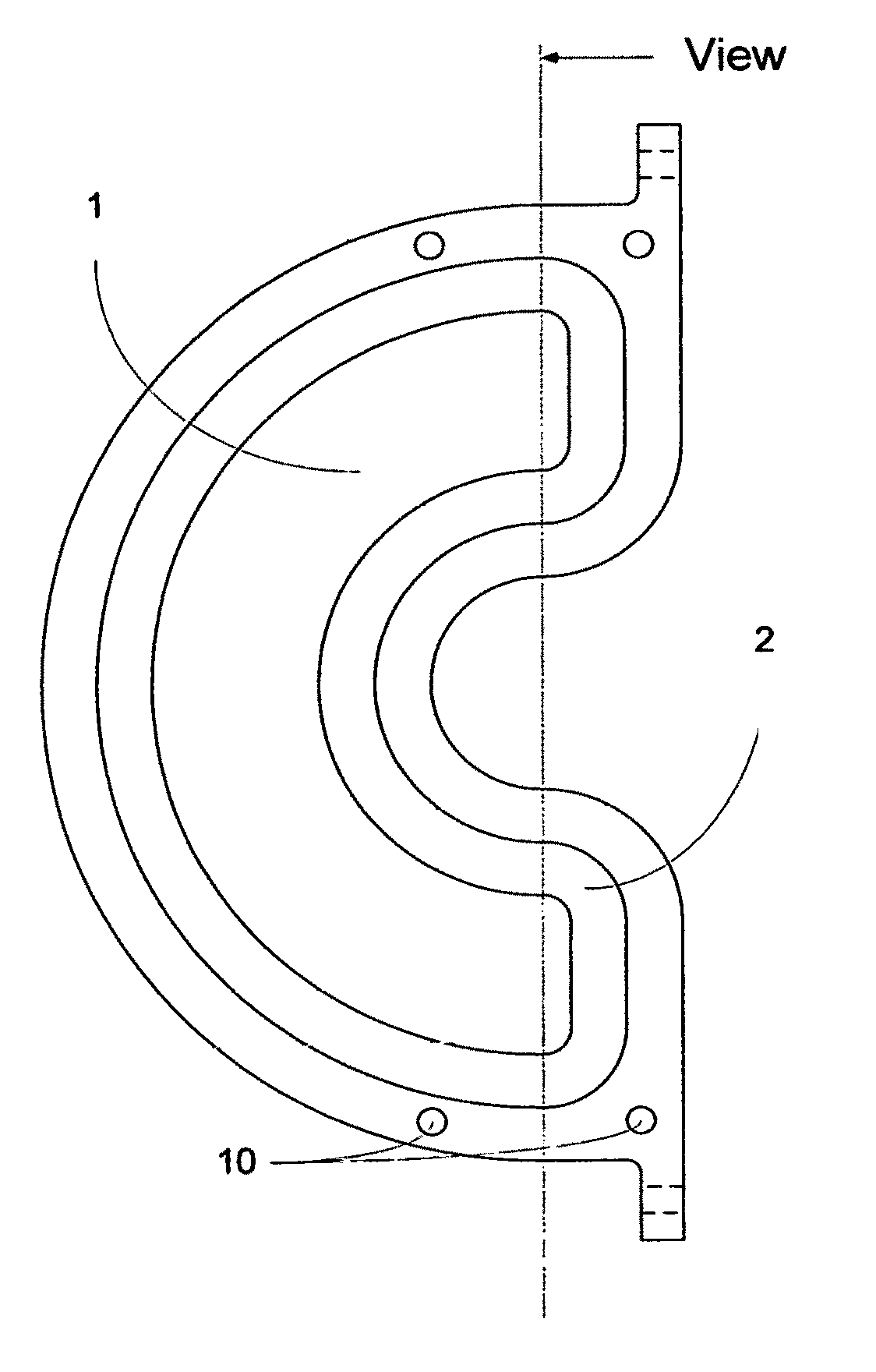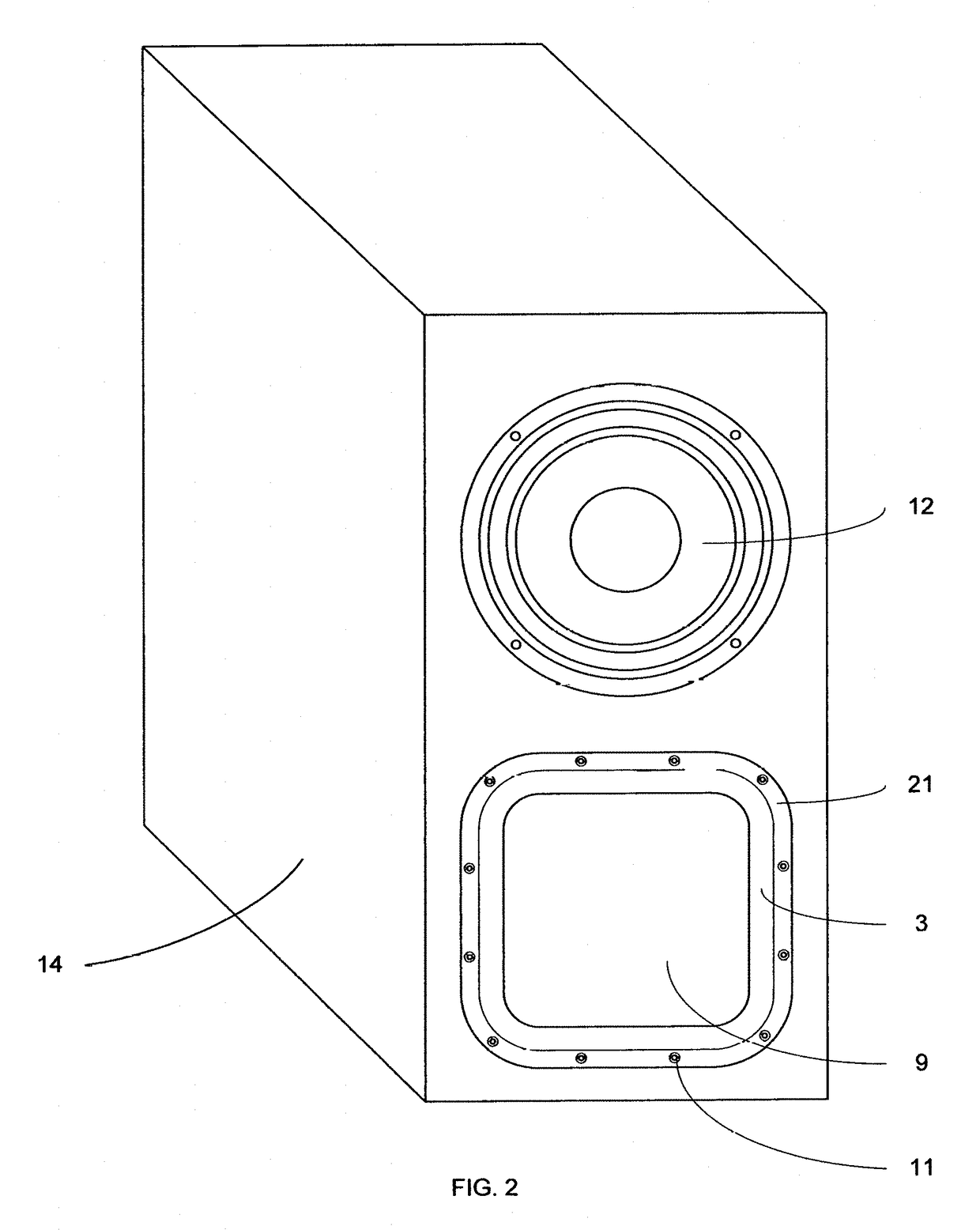Air motion transformer passive radiator for loudspeaker
a passive radiator and air motion technology, applied in the direction of transducer details, diaphragm damping, electrical transducers, etc., can solve the problems of large mechanical vibration passing onto the loudspeaker cabinet through the passive radiator frame, the single moving diaphragm of a conventional passive radiator must be very large, and the available area is restricted. achieve the effect of limiting the overexcursion of moving components and high output levels
- Summary
- Abstract
- Description
- Claims
- Application Information
AI Technical Summary
Benefits of technology
Problems solved by technology
Method used
Image
Examples
Embodiment Construction
[0025]This invention relates to a device which can be used to augment the production of low frequency sounds emanating from a loudspeaker cabinet 14 which also contains one or more low frequency active drivers such as a conventional moving coil and cone woofer 12.
[0026]The moving diaphragms or diaphragm sections of the present invention are arranged in generally parallel coaxial layers, with semi-confined air spaces 20 located between the moving diaphragms or diaphragm sections which have air openings 3 and 4 which alternate between the outer edges and the inner edges of the semi-confined air spaces 20 between and proximate adjacent diaphragm assembly layers.
[0027]A relatively positive and temporary air pressure zone located proximate the interior of the present invention and inside the loudspeaker cabinet 14, causes sound waves to propagate outward into the listening space from the exterior of the passive radiator device, while a relatively negative and temporary air pressure zone ...
PUM
 Login to View More
Login to View More Abstract
Description
Claims
Application Information
 Login to View More
Login to View More - R&D
- Intellectual Property
- Life Sciences
- Materials
- Tech Scout
- Unparalleled Data Quality
- Higher Quality Content
- 60% Fewer Hallucinations
Browse by: Latest US Patents, China's latest patents, Technical Efficacy Thesaurus, Application Domain, Technology Topic, Popular Technical Reports.
© 2025 PatSnap. All rights reserved.Legal|Privacy policy|Modern Slavery Act Transparency Statement|Sitemap|About US| Contact US: help@patsnap.com



